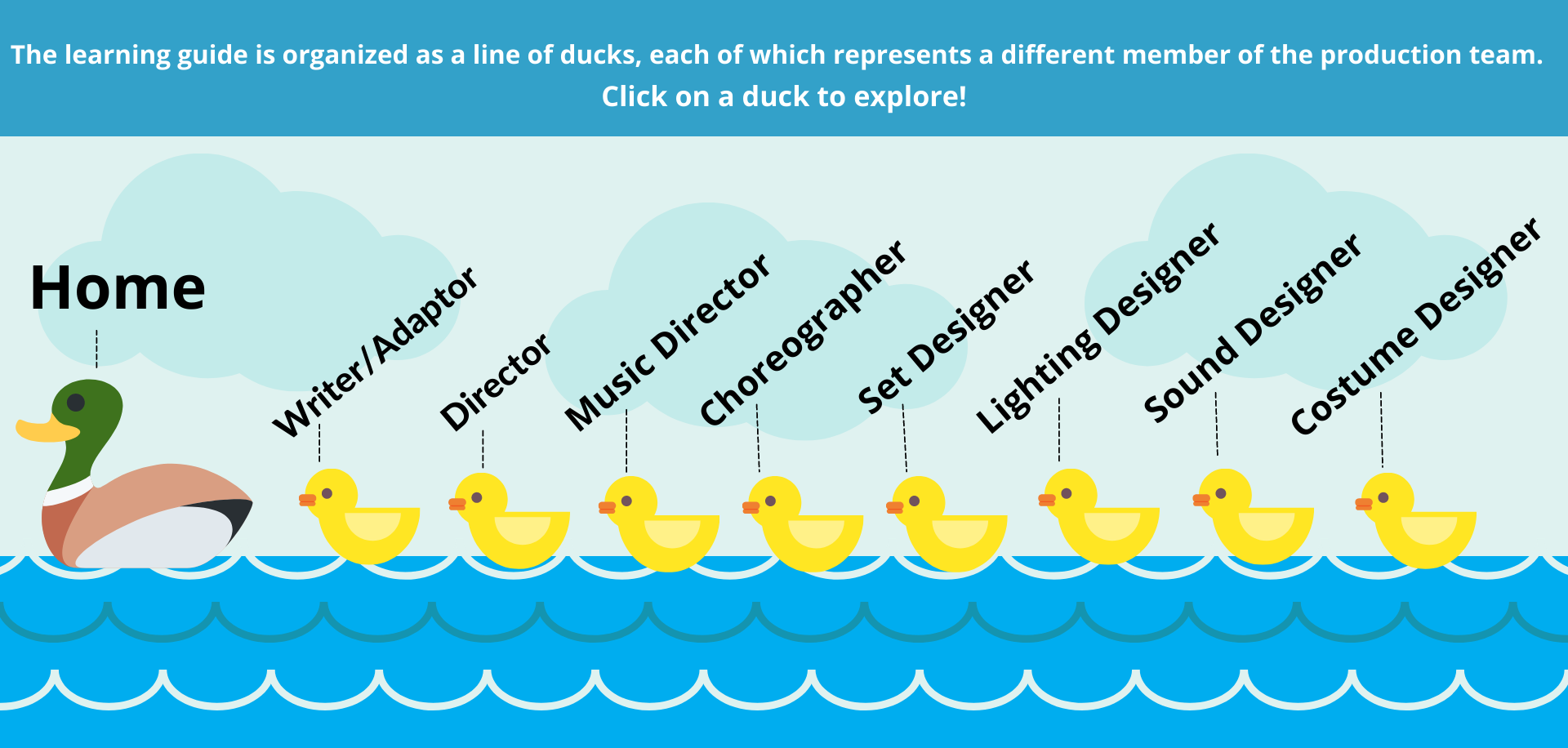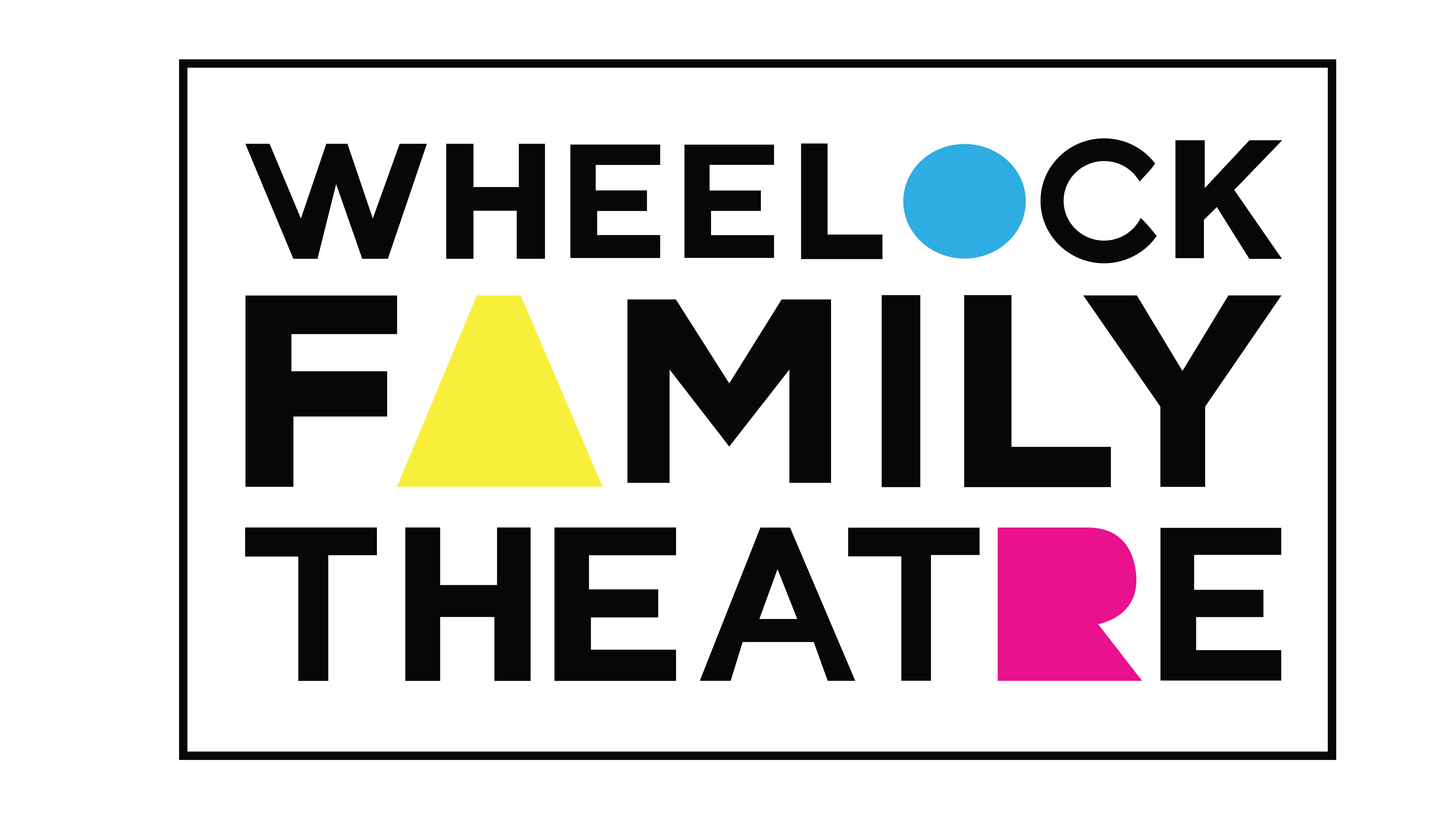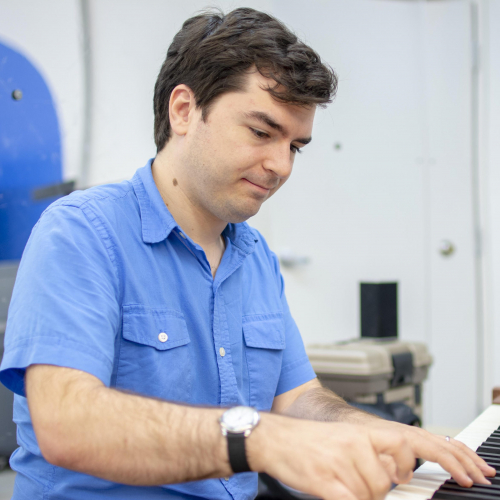
Activities are marked with the following age-range suggestions:
- EE — Early elementary (grades K-2)
- LE — Late elementary (grades 3-5)
- MS — Middle school (grades 6-8)
- HS — High school (grades 9+)
Contact Us
If you have any questions or would like to share how you and your class engaged with the VLG, send us an email at WFTEd@bu.edu.

Click through the tabs for activities and exercises
Watch an interview with Adaptor Michael J. Bobbit
Watch a scene in rehearsal
Begin by using one of the following thinking routines or protocols to analyze the similarities and differences between the original book Make Way For Ducklings and the musical adaptation:
- For younger students:
- Make a list of characters from each version. Which characters have been added or removed between the two versions?
- Break each version into a beginning, middle, and end, noting the similarities and differences in the plot.
- Describe the illustrations from the storybook using colors, designs, and moods. Describe a still frame or scene from the show using colors, designs, and moods.
- For older students:
- Map each version onto a story arc or story structure, noting the similarities and differences.
- Use a Venn diagram.
- Write a review of the storybook, and then write a review of the production. Be sure to include how each version made you feel.
- Ponder, discuss, and debate why the adaptors might have made the changes that you have noted.
Select another story relevant to your class and either gather or ask students to find different versions of the same story. Some suggestions include:
- Multiple cultures’ or authors’ tellings of folk tales or fairy tales
- Original fairy tales versus Disney versions
- Different directors’ stage or movie interpretations of the same play
- A book versus a movie when the book has come first
As you encounter different versions of the same story, consider the following questions:
- What do different cultures’ interpretations of the same story reveal about the traditions, values, and mores of each culture?
- What justification or reasoning might an author, playwright, screenwriter, or director give for making a change from an original version?
- What impact does each change or choice have on the reader or viewer?
- How do different choices or changes impact the message or most prominent themes of the story?
- What choices would you make if you were adapting or writing your own version of a specific story? How would you explain the reasons behind your choice?
As a culminating project…
- Create a new version of the story as a class, complete with both words and illustrations
- Set the story in your school, your town, or a creative place of your choice, such as underwater, in space, or in the future! How does the story need to be different in this new setting?
- Create a visual representation of the differences between two versions of a story
- Write a paragraph describing the differences between two versions of a story
- Write an ‘author’s note’ or ‘director’s note’ from the point of view of an author or director explaining why they made the choices or changes they made
- Write or direct your own script version of the story
- Complete a character analysis of the same character in two different versions of the story
The below scriptwriting challenges offer different ways to spark students’ creativity around creating storylines and dialogue for scripts of their own. Use one, two, or all three as you see fit!
- Comic Book Scripts: Print out one or multiple short comic strips, with the words in the dialogue bubbles whited-out or otherwise removed. Individually or in pairs, students write new dialogue into the speech bubbles based on their interpretation of the story from the illustrations in each box. Enjoying comparing the different stories that arise from the same comic strip!
- Three Line Challenge: Ask students to write, on three separate strips of paper, three lines of dialogue that are unrelated to each other. Each pair or small group then draws three of these lines out of a hat. Each pair or small group is to write a short scene which incorporates their three randomly-selected lines of dialogue: one line at the beginning of the scene, one in the middle of the scene, and one at the end of the scene. Alternate ways to gather lines to draw are… a) ask students to find three lines of dialogue from various books, b) teacher writes lines ahead of time, or c) teacher gathers lines of dialogue all from the same book, but does not tell the students. After sharing scenes, reveal that all the lines were from the same book. Take guesses on what the book was about, and then read the book together.
- Out of Place Objects: Imagine an object in a place it might not normally appear such as a flower growing out of a pillow or a basketball on the spike of the Empire State Building. Each student, pair, or small group writes a story of how the object got there. Then, each student, pair, or small group transforms their story into a script, or trades with another group and transforms that group’s story into a script.
After watching the interview with writer/adaptor Michael Bobbit in the Watch It section, ask students to separate a piece of paper into two folds or columns, and label them as follows: “Choices” and “Challenges”
Students should respond to the video using their two columns as follows:
-
Choices: What specific choices does Michael describe having to make in the adaptation from storybook to stage musical?
- EX: Which of the 4 ducklings’ names to select, and why?
- EX: Using a narrative framing device — starting with the climax and then returning to the beginning of the narrative
-
Challenges: What challenges do you imagine Michael, Sandra, and Bill faced in the adaptation from storybook to stage musical?
- EX: Honoring the author’s intent while making the story feel modern and accessible to parents and children
- EX: Creating humorous dialogue for characters who speak relatively sparsely in the storybook
What to do with your choices and challenges:
- Write a letter to the writing/adapting team about one of the choices, describing why you would or would not make the same choice if you were writing the musical version of Make Way For Ducklings
- Write a letter to the writing/adapting team about one of the challenges, asking questions about how they approached the challenge or offering advice on how you might approach the challenge
- Look at a different book or story through the lens of one of the choices. How would you approach making that choice with this other story? For example, what characters would you keep or cut, and why? Would you keep the story in a linear order or alter the timeline of the story, and why? Would you have a narrator figure or rely only on dialogue and song to tell the story?
- Look at a different book or story and make a list of the choices and challenges a writer/adaptor would have to make for this book. What unique challenges does this book present — perhaps a character who never speaks, a heavy reliance on magical effects, multiple narrative voices, very little text, or extremely detailed illustrations?
These activities help students to explore, in the words of writer/adaptor Michael Bobbit, “what’s in the book that’s not in the book” — that is, what stories the pictures tell.
If you are reading Make Way For Ducklings or another picture book:
- Bring the students’ attention to a specific illustration in the book. Show the illustration to each student so they have some time to observe it in detail. Ask students to select one character, object, or part of the scenery they would like to become. One-by-one, have students strike a frozen pose as their chosen part of the illustration, until everybody is on their feet and the illustration has come to life in the classroom or Zoom room.
- To add dialogue, ask each student to think of a word or short line that their part of the illustration might say, think, or be feeling. Have students share their lines one at a time. You might even write down these lines and transform them into a script!
If you are reading a book without pictures:
- Bring the students’ attention to a particular moment in the story. Ask students to envision what an illustration of this moment might look like. How might it convey both what the text relays and, possibly, more than the text relays?
- Ask students to draw their illustrations.
- Alternately, ask students to bring their illustrations to life by directing other students in the class into a tableau, or a frozen picture. The student who is directing tells the students who are acting where to stand, what poses to assume, and what expressions to show on their face. Ask the directing student to explain the choices they made in conceptualizing their illustration and then bringing it to life with actors.
- Ask each student in each tableau to share a thought-out-loud, which is a line that their character or part of the illustration might be thinking, feeling, or want to say in that moment of the story
To conduct this activity without a specific book or story:
- Hand out to each student, pair of students, or small group a picture — pictures can be famous paintings, photographs, illustrations, or other images of your choice, preferably containing one or more human subjects.
- Ask each group to write and/or perform a story and/or a scripted scene that goes along with the illustration, either beginning with the moment of the image, including the moment of the image, or ending with the moment of the image.
In this video, a WFT teaching artist will introduce your students to the tools for creating dynamic and exciting frozen pictures onstage. Then, the teaching artist will guide your students through a sequenced activity designed to challenge them to consider the most important elements of either Make Way For Ducklings or the book of your choice. Small groups of students must tell the story first in a series of 5 frozen pictures, then a series of only 3 frozen pictures, and, finally, just 1 frozen picture. The final pictures will reveal creative ways to capture a whole story in one frozen moment and illuminate the themes students consider most important, while the process itself will bring to light the challenges of editing down a story.
As a class, brainstorm ways that humans convey stories and information. Generate as many ideas as possible. Examples include books, plays, movies, songs, raps, social media such as Instagram, Twitter, and Facebook, news broadcasts and newspapers, podcasts, poetry, viral videos/Tik Toks, emails, text messages, commercials, comic strips, posters, etc.
Break the class into small groups. Each small group decides a new format which they believe would be effective and interesting to convey a specific story — either Make Way For Ducklings or another story your class is exploring.
Give each group a significant amount of time to explore their chosen format and either write or perform the story adapted into the new format.
After watching each group’s performance or reading their work, pose the following reflection questions to your class:
- What creative choices did you see your peers making as they adapted the story from its original format to a new format?
- What choices did you make or challenges did you face when adapting the story?
- In what ways does adapting a story or seeing other adaptations of the same story change your understanding of the story itself? What new ideas, themes, or discoveries arose from the adaptation process?
- Looking back at the start of your process, what advice would you give yourself if you were to start the adaptation process anew?






